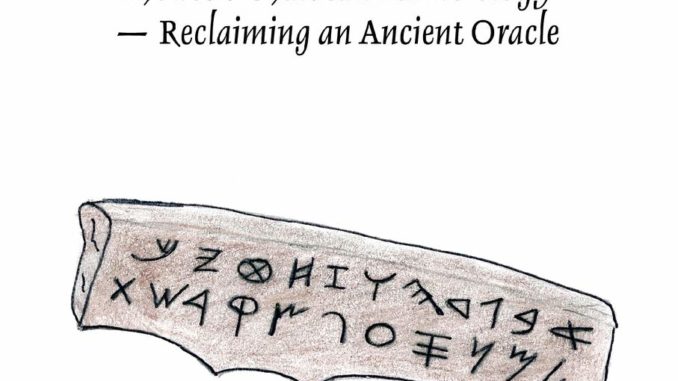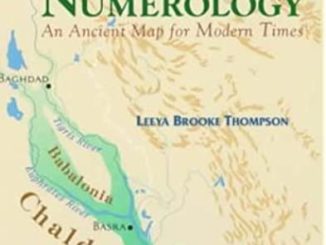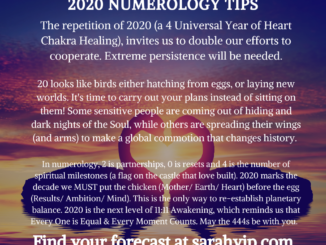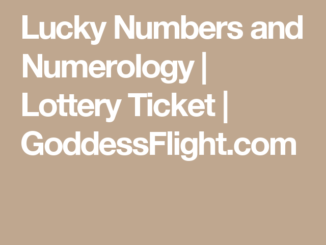
This is by no means your typical, light book about numerology, an ancient system that addresses the questions: Who am I, Why am I here, What is my mission in life. The author, Leeya Brooke Thompson, was assisted in her research by Dr. Loren Fisher, a scholar and former professor of ancient Semitic languages, to rigorously compare the sounds of the letters to numbers in ancient alphabets to match phonetic sounds in the modern English language. Their belief was that “… the Ancients had information about vibration which we are in the process of rediscovering.” The author stated, “I believed the Ancients knew something that we haven’t yet discovered-or we know it in our scientific studies, but not in the application of those studies of vibration to human consciousness and character which is concerned about the spiritual aspects of men and women.” The author has a point: the contemporary English alphabet wasn’t in use when the original system of numerology (gematria) was created and in use, so how could the simplistic Western form commonly used today be completely accurate?
The author, who has been involved with numerology for around half a century, starts by explaining that she did numerology readings for a specific client over a twenty-five-year period, the first time using the Western (Pythagorean) system then the Chaldean system, and finally using her “new” phonetic system described in this book. She says this about her client’s experience with the phonetic system: “This time she began to weep, then sob, for the number patterns absolutely described the core of pain she had been feeling all of her adult life.” That’s a powerful experience and result, to say the least.
There is a brief introduction giving concise information about Pythagoras and his involvement with numerology, as well as more about the effect of vibration as it relates to Cymatics (vibration creating form in matter) and Emoto’s work on how sound influences water crystals (e.g., negative words create ugly crystal formations, while positive or loving words create beautiful crystal formations). “The name is our ‘tool box’ at birth, indicating the strengths, aptitudes and predisposition we brought with us into this lifetime. The birth date, on the other hand, indicates what we have come to master and to accomplish. The interaction of these two forces-who we are and who we are being challenged to become-result in what our life looks like and whether we are working harmoniously with our life or rejecting the opportunities that come our way… Numerology is a map of consciousness.”
The first part is a brief and interesting explanation about the history of numerology and its use and possible influence in our daily lives and decisions, whether for individual use or for those who wish to do charts for others. What follows this is an understanding of the number patterns (including master and karmic numbers), how to set up your chart, the positions in your name, the positions in your birth date, the shadow and projection, your destiny and journey through time, how to integrate your chart, companions and mates, deciding to change your name or any changes to your name as a result of life experiences (misspelled names on birth certificates or immigration forms or marriage), plus additional information about the phonetics and roots of numerology. Thompson’s remarks about the Universal years are impressive in their revelations and scope.
If you’ve previously used the Western system of assigning numbers one through nine to the English alphabet or are unfamiliar with phonetics, you may find this system a challenge to get used to. Fortunately, the author provides a sample chart, with additional information in the appendices, and demonstrates how to do each section through the use of an example name and birth date then offers descriptions of what the numbers mean so you can identify your patterns. Because of the type of book it is, there are segments you’ll read and some you may not feel you need to read, but you’ll get more out of it if you read the entire book before you create your chart, so you familiarize yourself with the phonetic numerology process, including what to do about letters that are silent.
Know that this is not the usual light or more esoteric approach of other numerology books you may have read. This one includes some history, but it geared toward practical application for a person’s life experience and guidance. I have to be candid and say that the author initially asked me to contribute some of the content about the numbers, which I did, but the research that led to this revised system and the content are 98% hers. I didn’t see what she’d done with the material until the book was published-but this does not alter the fact that she did a stunning job with the topic and what supports it. Not having read it since it was published in 2006 has led me to revisit what Leeya truly accomplished through her commitment to accuracy for individuals.
Proudly WWW.PONIREVO.COM
by Joyce Shafer



